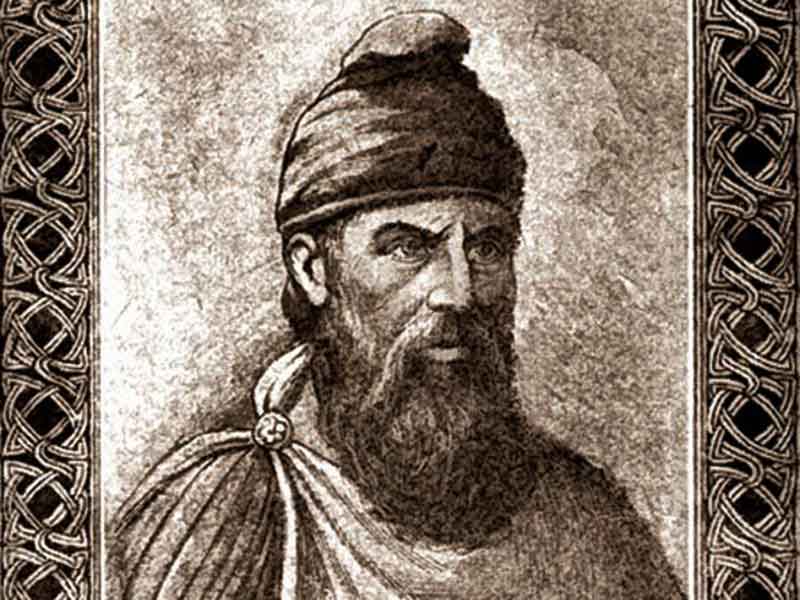@HistoryChronicles: Discover the legacy of Decebalus, the last king of Dacia who challenged the might of the Roman Empire and left a lasting mark on ancient European history!
Decebalus Biography
Explore the life of Decebalus, the courageous Dacian ruler who stood against Emperor Trajan. Estimated read time: 8 minutes.

Born around 87 AD in Dacia (modern-day Romania)
Died in 106 AD at Sarmizegetusa, during the Roman conquest
Estimated around average stature for his era, approximately 1.75 m
Decebalus Early Life and Background
Decebalus was born into a noble Dacian family in the Carpathian region, a land known for its rugged landscapes and warrior traditions.
From an early age, he was trained in leadership and combat, preparing to defend his nation against neighboring empires.
The Dacian people were deeply spiritual, and their strong connection to nature influenced Decebalus’ worldview and decisions as a ruler.
His early experiences among the Dacian tribes instilled in him a sense of unity and purpose that would later define his reign.
Growing up under turbulent times, he witnessed frequent Roman incursions, shaping his resolve to protect Dacian sovereignty.
Decebalus Major Achievements and Milestones
Decebalus united the fragmented Dacian tribes into a powerful kingdom capable of standing against Rome.
He modernized the Dacian military, incorporating innovative fortification systems in the Orăștie Mountains.
His leadership during the First and Second Dacian Wars against Emperor Trajan became legendary in European history.
Decebalus managed to negotiate favorable peace terms with Rome after their first conflict, temporarily ensuring Dacia’s autonomy.
His rule laid the groundwork for national unity and inspired future generations to value courage and independence.
Decebalus Challenges and Struggles
Decebalus faced the overwhelming might of the Roman Empire, a challenge few rulers could withstand.
Despite limited resources, he maintained his people's morale and sought alliances across the region.
The destruction of Dacian strongholds tested his resilience and commitment to his nation's survival.
He battled internal dissent among rival clans seeking compromise with Rome.
Ultimately, surrounded by Roman forces, he chose death over capture, symbolizing his unwavering defiance.
Decebalus Personal Characteristics and Relationships
Decebalus was known for his intelligence, strategic insight, and charisma that inspired loyalty among his people.
He valued freedom and dignity above all else, reflecting a deeply rooted sense of honor in Dacian culture.
His relationships with tribal leaders were marked by mutual respect and shared responsibility for the kingdom’s defense.
Decebalus displayed both compassion and cunning, balancing diplomacy with decisive military action.
His leadership style combined wisdom with boldness, earning him respect even from his Roman adversaries.
Decebalus Impact and Legacy
Decebalus’ resistance against Rome became a symbol of national pride in Romanian history.
His story is immortalized on Trajan’s Column in Rome, depicting his valor and tragic end.
The Dacian legacy influenced Romanian identity, language, and culture for centuries.
Historians regard him as one of the most significant figures in Eastern European antiquity.
Today, his spirit continues to inspire leadership, courage, and perseverance in the face of overwhelming odds.

Decebalus Summary
Decebalus stands as a timeless symbol of bravery and determination against imperial domination.
His defiance toward Rome marked one of the most dramatic episodes in ancient European resistance.
Though defeated, he secured a spiritual victory that outlasted empires and inspired generations.
His story continues to echo across history as a testament to the endurance of freedom and honor.
Decebalus remains a revered figure representing the unyielding spirit of Dacia.
Explore Our Featured Websites
Discover trusted websites offering professional services in SEO, local promotions, outdoor adventures, and real estate.
SEO by TuneMyWebsite
Boost your organic traffic and keyword ranking with expert SEO optimization, fast-loading performance, and brand protection strategies.
Promote Barcelona
Promote your business across the vibrant city of Barcelona with tailored marketing and digital visibility campaigns that reach a local audience.
Aventura Girona
Experience adventure sports and canyoning tours in Girona, guided by seasoned professionals for thrill seekers and nature lovers alike.
2let2 Cardiff
Find your perfect property in Cardiff with 2let2, offering student accommodation and professional housing solutions in the heart of the city.